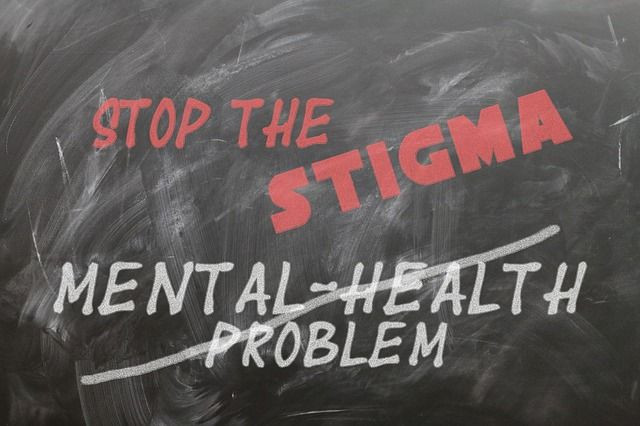Mental Illness Awareness: 6 Myths About Mental Health You Need To Unlearn

Conversations about mental health are still "hush" as we debate what constitutes a healthy mind. This often leads to preconceived notions of mental illness, and the stigmatization of sufferers. Every year, one in five Americans experiences mental illness problems; this emphasizes the need to have a more open dialogue about the mental health conditions that affect our friends, family, and even many of us.
"Years ago we used to speak of cancer in hushed voices, now there are active efforts and open discussions seeking a cure. It is unfortunate that we still speak of mental disorders in hushed voices, wouldn’t it be great if America would take the same approach to mental disorders as we have taken to seek a cure for cancer," Ken Yeager, an associate professor of psychiatry at the Ohio State University Wexner Medical Center, told Medical Daily.
In 1990, Congress established Mental Illness Awareness Week in honor of the efforts of the National Alliance for the Mentally Ill (NAMI) to raise mental illness awareness. NAMI advocates for the rights of individuals living with mental illnesses, and lobbying for improved services. Despite their valiant efforts, there are still stereotypes that will discourage people from getting help when they need it the most.
NAMI and other organizations rally together to replace the stigma with hope.
First, unlearn these six popular myths and misconceptions about living with mental illness.
Myth #1: Mental illness is a sign of weakness.
Fact: People who are afflicted with mental illness are not weak. Rather, an intersection of biology and experience creates mental health problems.
"Every individual has a different biological makeup and phenomenological reality, and so different individuals are just less prone than others, often by luck or chance," Mary Beth Somich, a licensed professional psychotherapist for children, families, and individuals affected by mental illness in North Carolina, told Medical Daily.
Symptoms of mental illness are considered to be the body's natural and healthy response to a form of trauma. For example a survivor of domestic violence may be diagnosed with depression, post-traumatic stress disorder, or anxiety.
"This is not a sign of weakness," says Somich, "in fact, the individual is probably very strong considering he or she is a survivor."
Myth #2: Mental illness is an adult problem.
Fact: One in five children either currently or historically have had a mental illness, according to the National Institute of Mental Health.
Yet, kids and teens aren't getting the mental help they need. Somich admits the percentage of children that suffer from mental illness is much higher than we believe it to be.
"Children are absolutely capable of experiencing anxiety, depression, and a whole slew of issues.”
Somich has have worked closely with NAMI to create psychoeducation and support for parents of children with mental illness to bring awareness to this very subject.
Myth #3: Therapy is a waste of time and money.
Fact: Therapy combined with medication is considered to be the treatment of choice for mental illness. It helps individuals develop a greater level of self-awareness. Also, it "helps build coping skills, think of it as being given a tool box with all of the right tools to address a particular set of symptoms, or to navigate through difficult situations of unfamiliar situations" said Yeager.
Therapy provides reassurance that what the person is experiencing is "normal" and that their response is what most would experience in similar circumstances. Validation can help the person to stabilize, and to eventually take a proactive role in creating mental wellness. It not only helps them improve and survive, but also learn to thrive as a result of their new awareness.
Myth #4: People with mental illness never get better.
Fact: Treatment for mental illness should not be thought of as cured, but in percentages, according to Dr. Steffanie Stecker, a licensed psychologist and owner of Mountain Vista Psychology in Colorado.
"So, for example, if someone comes to me in great distress then at that time their problem/mental illness is at 100 percent. Through a counseling relationship, perhaps they could get down to 60 percent. Then, let's say, they decide to eat healthier foods and that gets their difficulty down to 40 percent," she told Medical Daily.
From here, the person can add more movement to their day, which gets their difficulty to down to 20 percent. However, for this person 20 percent may be totally livable.
She added: “Will they have a bad day from time to time? Most of us do.”
Myth #5: People with mental illness can't work.
Fact: There is a common misconception that people with mental health issues cannot function in a high pressure work environment. The reality is, people with mental health problems are just as productive as other employees, demonstrate good attendance, motivation, work quality and they advance similar to other employees.
"Despite the existence of effective, evidence based effective treatments for mental disorders many still hold a belief that persons with mental disorders are untreatable, difficult, or incapable of functioning it the workplace," said Yeager.
Myth #6: You can't prevent mental illness.
Fact: There is an interaction between genetic and environmental factors that influence mental health. Scientists believe some individuals have a genetic predisposition for mental illness. Although genes influence the development of mental illnesses, they do not preordain it.
Moreover, there are environmental conditions that may be present, such as damage from exposure to alcohol; illegal drugs; and tobacco; low birth weight; exposure to toxins in the environment, among many others that can may negatively affect the development of the fetus and newborn. This can contribute to the onset of mental disorder, according to the University of Washington School of Social Work.



























